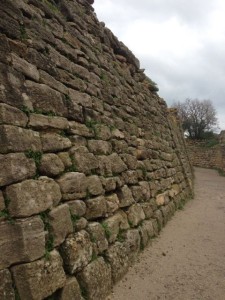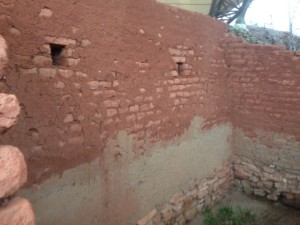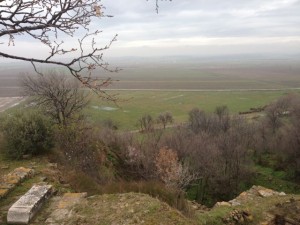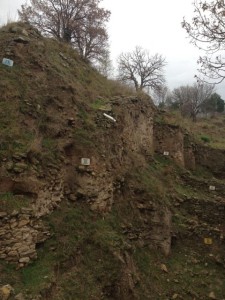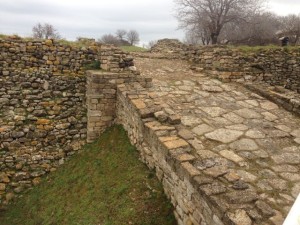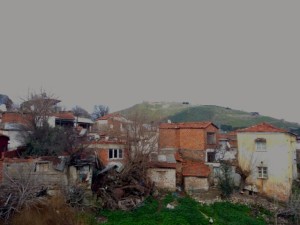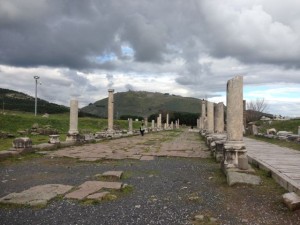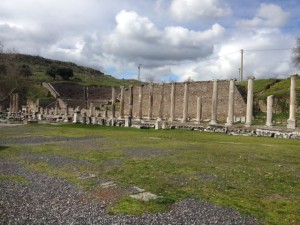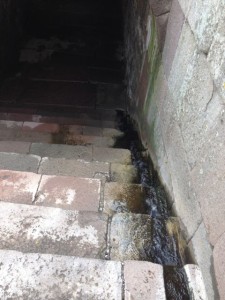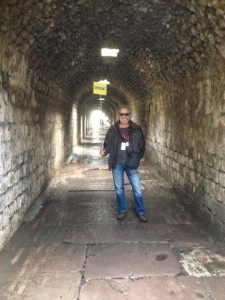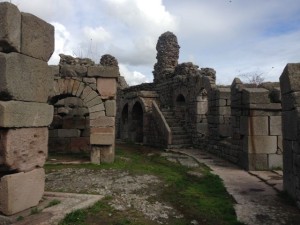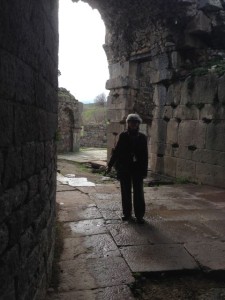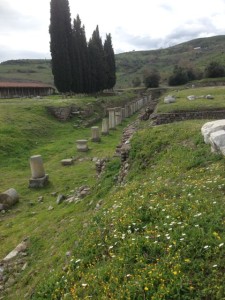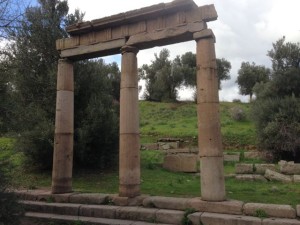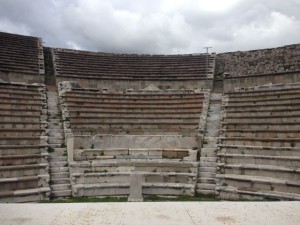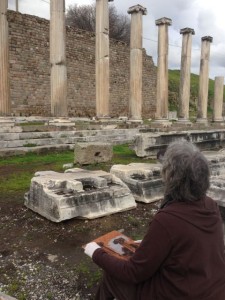Our first stop today was Troy, one of most important Bronze age cities dating to 3000 BC. There were nine different cities built on top of each other. Every 250 years or so, the city expanded and new city walls were built atop or outside of the old ones.
The foundation of the city walls and buildings were of stone, but everything above the foundations was built of dried mud brick, so not much remains today.
Troy is famous because of Homer’s Iliad, written 600 years after war that it describes. It is the Iliad that inspired Heinrich Shliemann, an amateur German archeologist, to discover and excavate Troy. Unfortunately, the jewelry and objects that he excavated were removed to Germany (as were entire buildings from Pergamon).
The ocean that Troy once backed onto has silted in and is now rich farmland.
From Troy, we drove through miles of olive groves, over Mount Ida, and down towards Pergamon.
Unfortunately, we did not visit the hilltop site of Pergamon because buses are not allowed up the hill. Visitors are now taken up in a sky tram that creates liability issues for the company.
We did, however, visit the Asklepion of Pergamon, a hospital complex built below Pergamon and dedicated to hydrotherapy. As early as the 2nd Century AD, the Romans believed that many behavior problems were caused by subconscious and could be rectified by having people face their buried memories (according to our guide, Sedar).
We entered the site through a grand columned Via Tecta or Sacred Way, with a paved road for chariots lined on both sides by a covered walkway supported by columns.
Inside the sacred courtyard are the ruins of a library, theater, numerous temples and structures surrounded on all four sides by a columned covered walkway.
One form of hydrotherapy practiced involved a tunnel with spring water running through it where patients would lie with the soothing sound of water around them. Openings in the roof allowed ‘doctors’ to talk to them from above.
The hospital is a round building with beautiful arches separating rooms.
A covered outdoor recreation area.
As we drove from Pergamon to Kusadasi, we passed numerous hilltop forts built by Crusaders, yet another reminder of how this area has been at the center of five thousand years of history. We were once again blessed by the weather gods as it rained when we were on the bus but not when we were wandering the sites.




